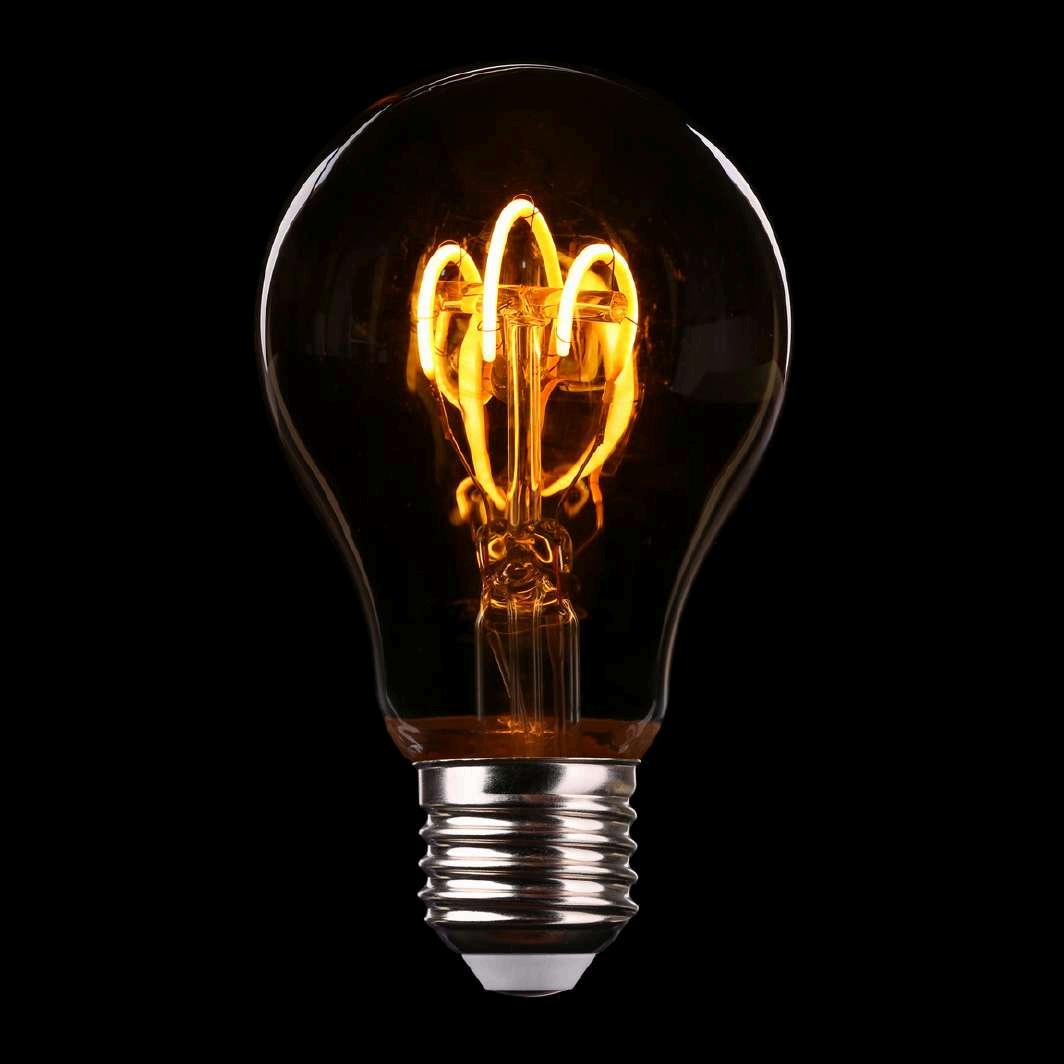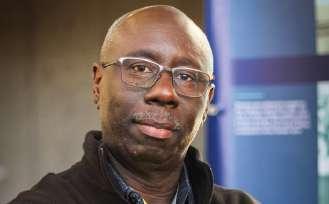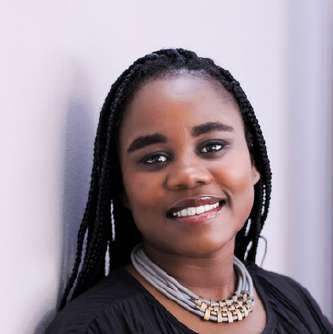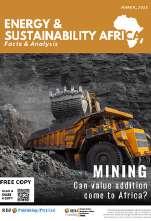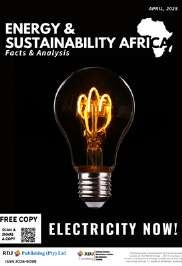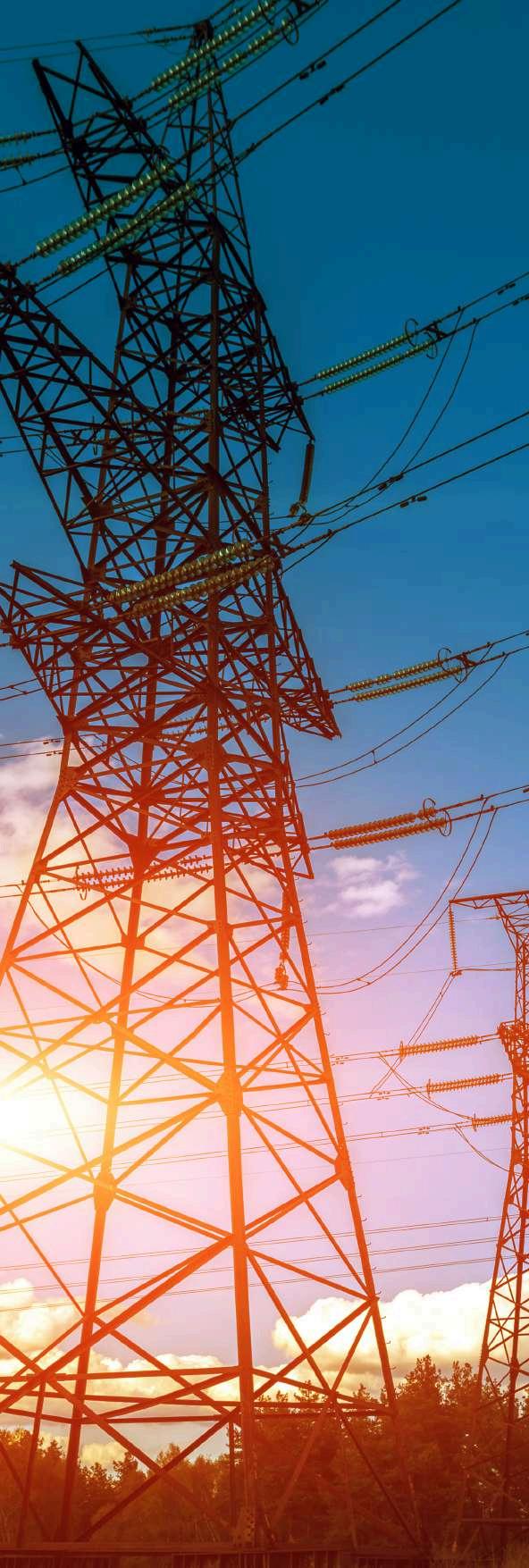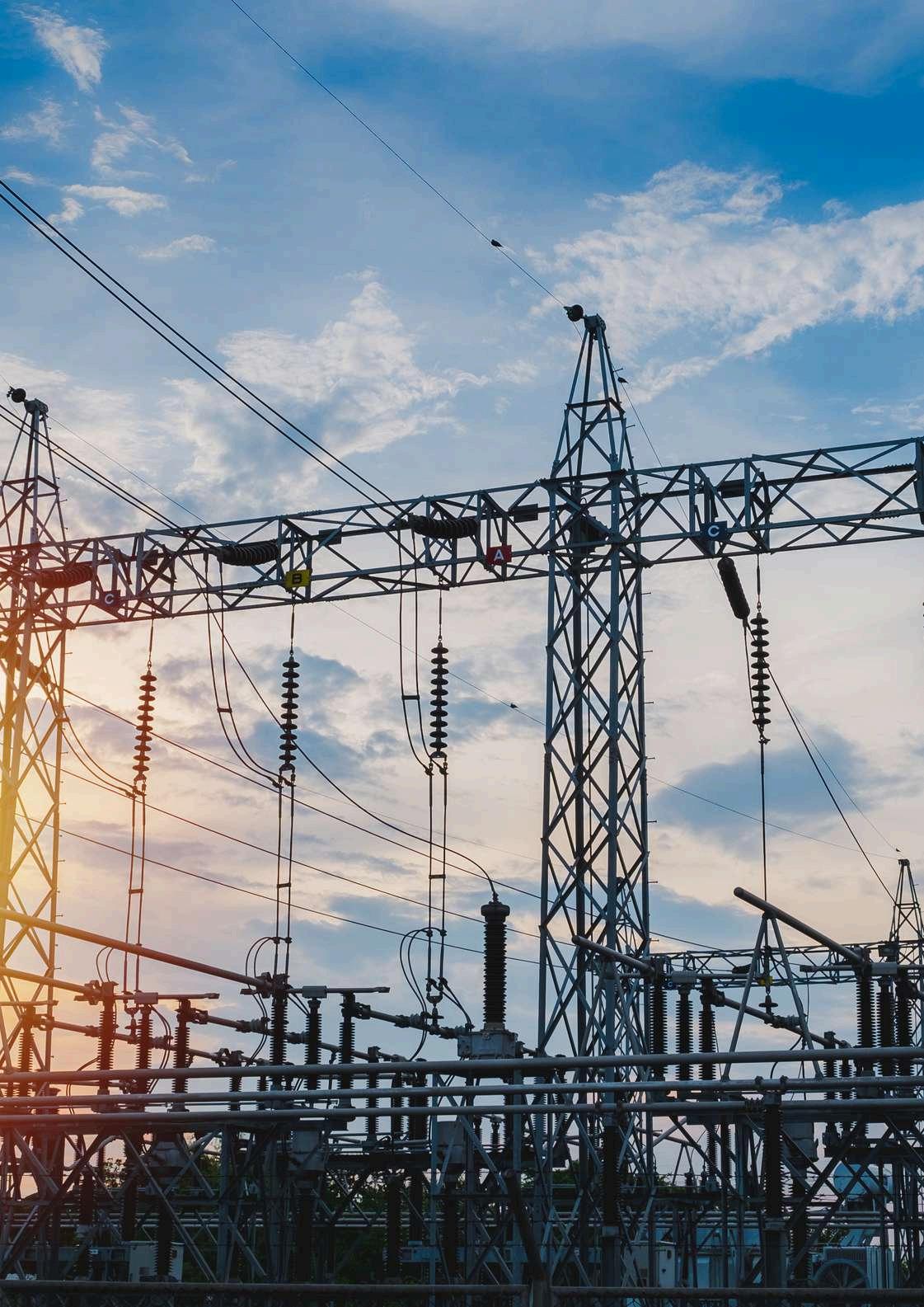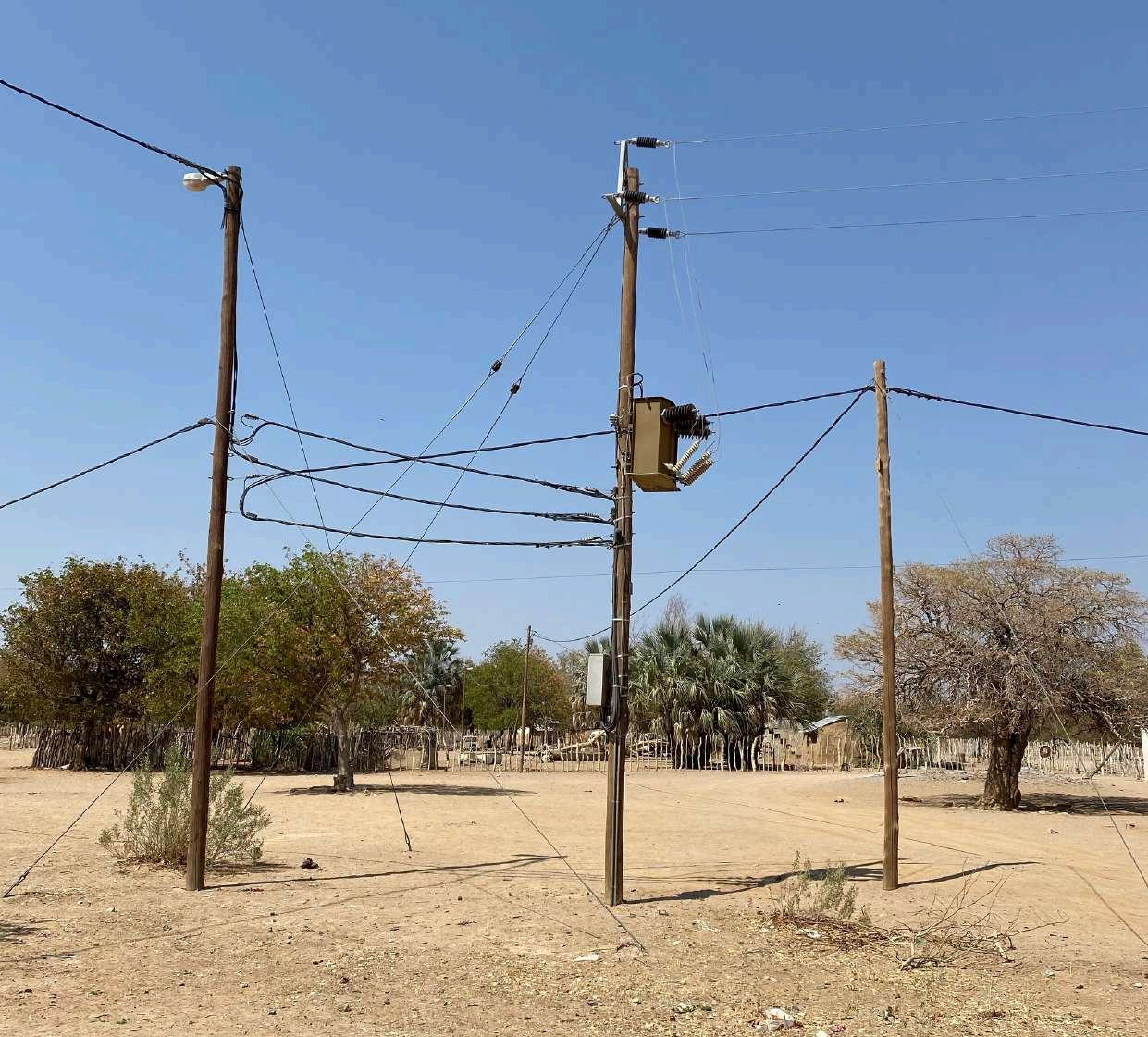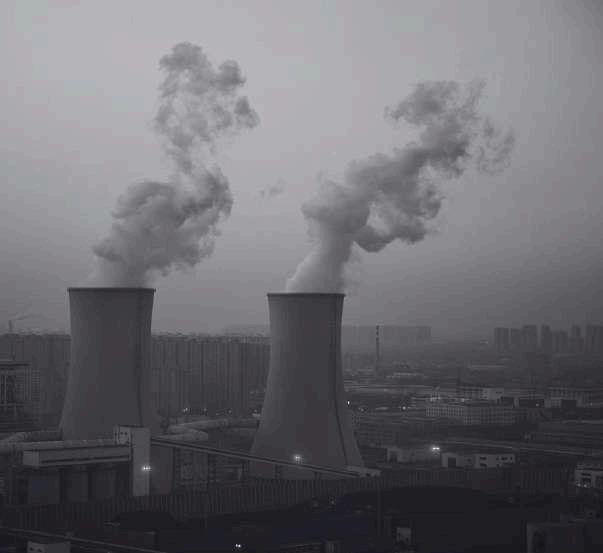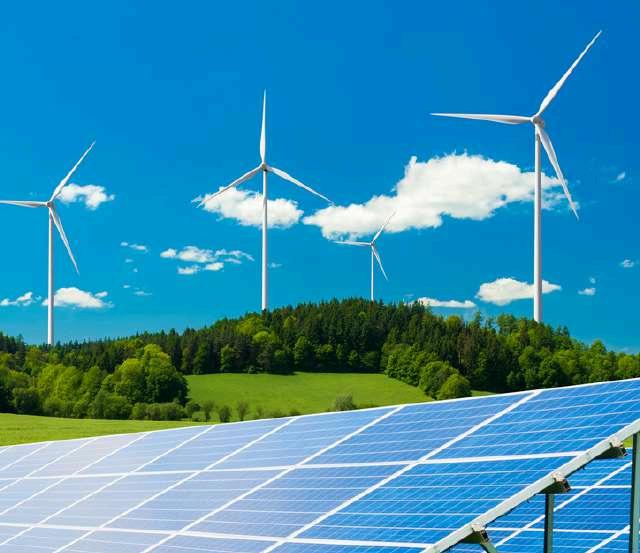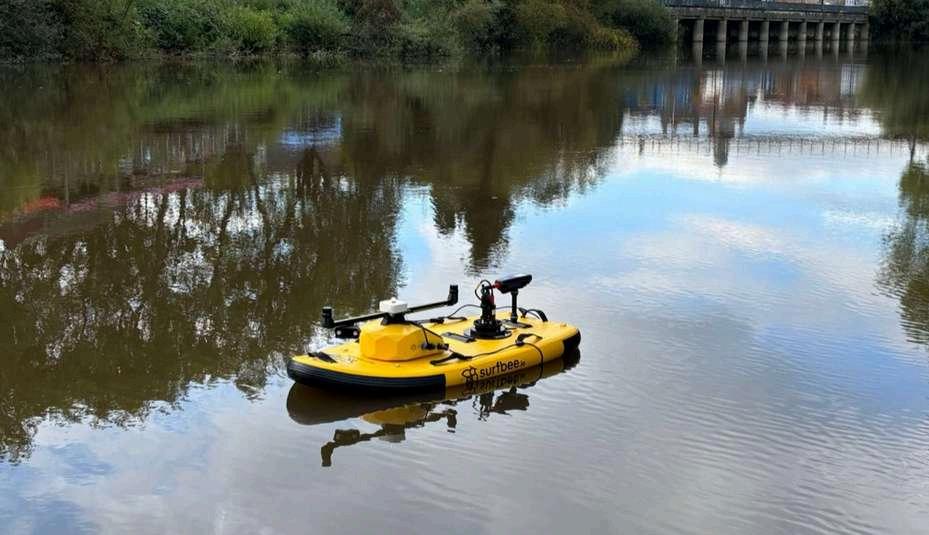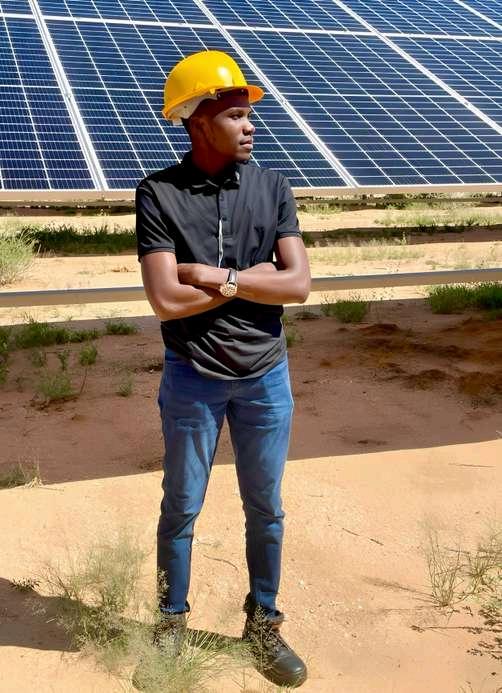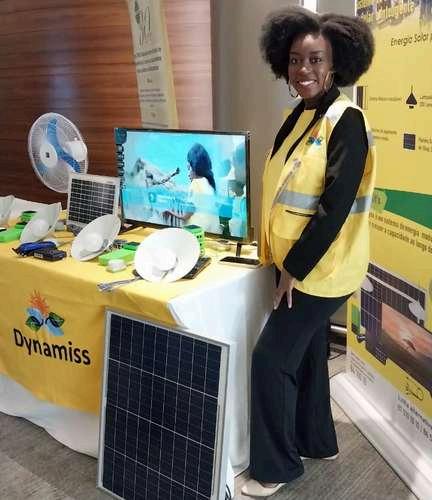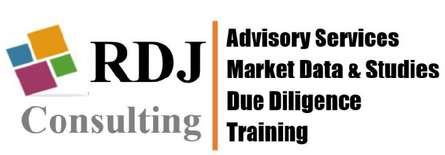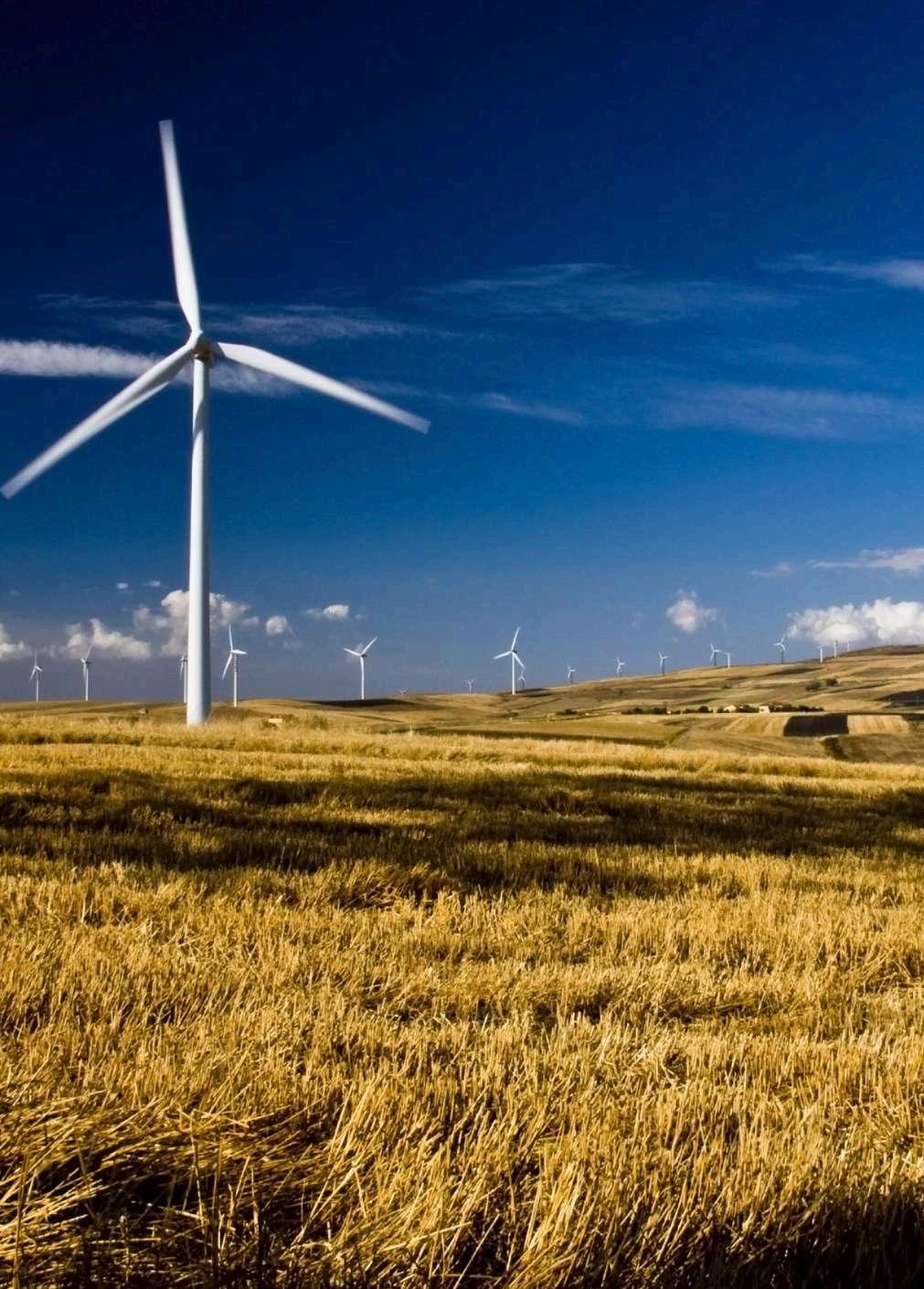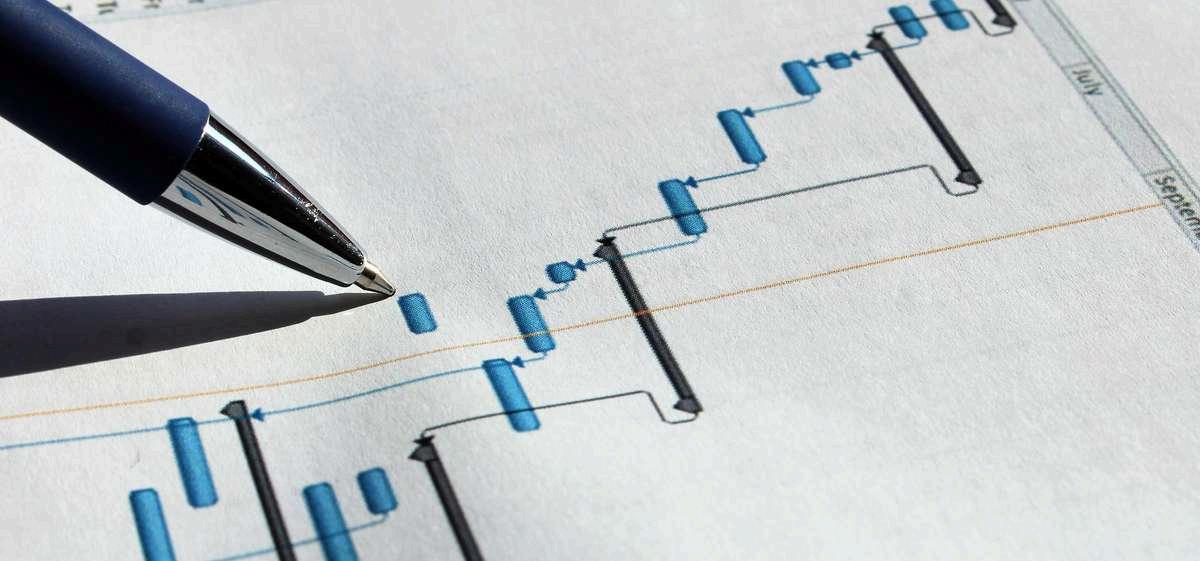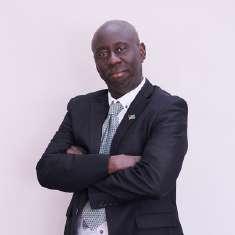Regulators Gear Up for a Just Energy Transition
AUTHOR:GraceKangotue ChiefResearcher/Economist@ RDJ Consulting
Courtesy:Canva
In pursuit of its mandate “to facilitate harmonization of regulatory policies, legislation, standards and practices and to be a platform for
effective cooperation among energy regulators within the SADC region,” the Regional Energy Regulators Association of Southern Africa (RERA) convened its 2025 Annual Conference and General Meeting in Swakopmund, Namibia, from 07–10 April, 2025
Held under the theme “The Regulator’s Readiness Towards a Just Energy Transition,” the event brought together regulatory bodies, utilities, financial institutions, technical experts and development partners to align regional efforts for an inclusive, sustainable, and integrated energy future
Central to the conference was the shared understanding that a just energy transition in Southern Africa must prioritise equity, affordability, and development alongside climate goals Speakers underscored the importance of protecting vulnerable populations and creating economic opportunities in the shift to
bold leadership to ensure the region’s transition is not only green, but just
renewables High-level discussions focused on the regulator’s evolving role, ensuring stable and predictable frameworks for investment, while enabling new business models such as prosumers and mini-grids.
A highlight was the presentation of the Mega Solar –Regional Market Study by the African Development Bank (AfDB) The study assessed off-take opportunities for 2–5 GW of solar power generated in Botswana and Namibia While challenges such as insufficient transmission capacity and financing barriers were noted, the study revealed promising opportunities in regional power trade. These include new intermediary off-taker models, phased access to contestable customers, and the importance of harmonising grid codes and wheeling frameworks
Key recommendations focused on:
Strengthening cross-border transmission
Deploying battery energy storage for reliability Supporting financial risk instruments for exportoriented IPPs
In Morocco, for instance, AI systems are used to monitor hydrological patterns in real time, enabling officials to make proactive decisions around reservoir operations and irrigation scheduling Elsewhere in Africa, robotic devices, such as self-operating drones and submersible robots, are inspecting critical water infrastructure These machines can help to detect leaks in pipelines, clear debris in reservoirs, and even analyze water quality in real time. In South Africa (Western Cape), smart water meters and leak detectors are being piloted to stem losses in urban systems that traditionally lose 30 – 40 percent of their water to inefficiencies, (Department of Water and Sanitation, 2022)
Challenges:
Pilotsystemsrequiresubstantialinvestment. Poorconnectivityinruralareashinderssystem effectiveness.
Mostwaterutilitieslackstafftrainedindigital systemmaintenance.
As the dual pressures of water scarcity and food insecurity intensify, AI and robotics present timely solutions with enormous potential Their ability to enhance decision-making, increase productivity, and reduce environmental impact is well documented But their success will depend not on the technology alone, but on the systems that surround it such as training, policy, accessibility, and trust If Africa is to benefit fully, it must approach this digital transformation not as a passive recipient of innovation, but as an active architect ofit
Readings:
https://openknowledge fao org/server/api/core/bitstreams/6fa561 52-c232-4bc6-8eee-7d413261ad64/content
https://www.worldbank.org/en/programs/digital-water www dws gov za/Documents/Gazettes/Approved%20National%20 Water%20Resource%20Strategy%20Third%20Edition%20(NWRS3)% 202023.pdf
https://www cgiar org/initiative-result/artificial-intelligenceenables-extension-services-reaching-12-million-farmers-in-subsaharan-africa-to-respond-to-farmers-voices/ https://www gsma com/r/digital-agriculture-maps/ https://www nature com/articles/s41598-023-33042-0 https://www.flows.com/bluebot-clamp-on-wifi-smart-watermeter/
https://www xylem com/en-uk/about-xylem/newsroom/pressreleases/latest-river-monitoring-drone-boats-arrive-in-uk/
Fiber's technical superiority lies in its speed, reliability, and resistance to interference. Unlike traditional copper lines, which transmit electrical signals that degrade over distance and are susceptible to electromagnetic noise, fiber transmits light This allows it to carry more data, at faster speeds, over longer distances, with minimal signal loss Upload and download speeds are also typically symmetrical, making fiber ideal for activities like video conferencing, cloud computing, and online gaming. Furthermore, fiber connections experience low latency and are unaffected by weather conditions, ensuring a consistent user experience
The benefits of fiber internet however extends beyond its speed. For homes and businesses alike, fiber provides massive bandwidth, which is essential in an age where households operate multiple smart devices and businesses rely heavily on cloud platforms and data analytic In homes, it supports seamless streaming, fast downloads, and smooth operation of smart appliances While, in industries, it powers digital transformation, enabling automation, remote work, telemedicine, and smart infrastructure systems. The resilience of fiber also minimizes downtime, a critical factor for sectors that depend on constant connectivity
Despite its advantages, fiber internet comes with challenges, particularly in terms of infrastructure such as the high costs of installation, the need for specialized skills, and regulatory hurdles which can slow deployment, especially in developing regions These factors are particularly evident in Africa, where the digital divide remains pronounced In 2008, Sub-Saharan Africa had only one active fiber-optic submarine cable connecting it to the global internet. Today, the continent boasts numerous submarine cable landings, including the West Africa Cable System (WACS), EASSy, and SEACOM, but inland expansion remains uneven
Among African countries, Egypt stands out as a leading example of fiber adoption and internet speed progress. Egypt’s progress is largely attributed to the efforts of Telecom Egypt, the state-owned incumbent, which controls over 80 percent of the fixed broadband market and spearheaded a national fiber-to-the-curb (FTTC) strategy This strategy focused on bringing fiber closer to homes and businesses, enhancing speed and reliability while managing deployment costs. Through strategic public and private partnerships, Egypt has succeeded in expanding fiber access in major cities, while gradually working on rural connectivity Other service providers,
Welcome to another edition of Youth in Action In this edition we meet Mr. Andy Lokadi, a fourthyear Electrical Power Engineering student at the
Namibia University of Science and Technology (NUST) Mr Lokadi tells us his story of how he has grown a strong passion for renewable energy and sustainability. Andy has developed skills in electrical systems, solar PV design, and power system analysis He is currently a lab technician intern at NUST in the Electrical Engineering Department and a part-time intern at Namibian Drone Services, where he assist with RPAS (Remotely Piloted Aircraft Systems) maintenance and repairs.
1. What inspired your journey into the field of Renewable Energy?
“Growing up in communities where reliable access to electricity was inconsistent, I witnessed first-hand how the lack of energy limited education, health services, and development This experience ignited my passion for renewable energy, especially solar power, as a means to bring sustainable change The potential of renewable energy to transform lives sustainably motivated me to pursue electrical engineering with a focus on renewable technologies that are both accessible and impactful.” Mr. Lokadi said.
2. How has your academic experience shaped your understanding of energy systems and sustainability?
Mr Lokadi says, “NUST has equipped me with a deep understanding of both technical systems and the broader implications of energy use. Courses like Solar Energy PV Design and Renewable Energy taught me how to size, analyze, and optimize power systems Beyond theory, hands-on labs and design projects have shown me the importance of efficiency, innovation, and sustainability in real-world applications ”
3. What are some of key challenges that the energy sector is still facing in terms of sustainability, and how do you think engineers can help solve them?
“One major challenge is balancing growing energy demands with the need to reduce carbon emissions Many regions still rely heavily on fossil fuels due to cost and availability. Engineers can drive the transition by designing affordable, scalable renewable energy systems, integrating smart grids, and advancing energy storage solutions We must also promote circular economy practices to minimize waste and environmental impact ” Mr Lokadi said
In this episode, we meet Stela Guidione Cossa, a Solar Technician Manager at Dynamiss Solar Lda Stela Guidione Cossasharesherstoryofhowshegotstartedintheenergy
industry, detailing the challenges and offering invaluable advice toprofessionalsseekingtheirpathinthisdynamicindustry.
Tell us about your journey in the energy industry.
Myprofessionaljourneyinthesolarenergysectorcommencedin 2019 when I joined Enerluz Engenharia e Eletricidade in Brazil as an intern. There, I gained invaluable foundational experience in renewableenergyprojects.Shortlythereafter,Iwaspromotedto Project Analyst, focusing on on-grid solar projects in Brazil with systemsrangingfrom5kWpto250kWp.Thisroleallowedmeto hone my expertise in designing, analyzing, and implementing solar projects In 2023, I was entrusted by Spark, a Netherlandsbased company, to represent them in Mozambique as Solar Technician Manager at Dynamiss Lda Solar In this capacity, I oversee a team of over 15 technicians nationwide, managing operations within the Solar Home System sector My responsibilities include supervising installations, coordinating technical support, and ensuring the seamless delivery of clean, affordableenergysolutionstounderservedcommunities
What do you do in your current role at your company?
InmycurrentroleasaSolarTechnicianManageratDynamissLda Solar, I oversee technical operations and manage a team of over 15 technicians across the nation My responsibilities include planning and supervising solar system installations, ensuring the proper functioning of all products, and coordinating after-sales support for customers. I work closely with the team to repair batteries and resolve technical issues, ensuring that customers receivereliableandefficientenergysolutions.
Could you describe your typical day at work?
A typical day at work for me as a Solar Technician Manager at Dynamiss Lda Solar begins with planning and coordinating the dailyactivitiesofmyteam.Ireviewongoingprojects,assigntasks to technicians, and ensure they have the resources needed to complete their assignments effectively. Throughout the day, I oversee solar system installations and address any technical challenges that arise, either in the field or remotely I also spend time troubleshooting issues reported by customers, such as repairingbatteriesorensuringproductsarefunctioningoptimally Part of my day is dedicated to administrative tasks, such as updatingreportsandanalyzingperformancemetrics
“
The best thing about my work is making a tangible difference in people's lives by providing access to clean, reliable energy.”
-StelaGuidioneCossa
What are some of the challenges you have faced in the industry?
In the solar energy industry, I’ve faced logistical challenges in delivering and installing systems in remote, off-grid areas with limited infrastructure. Managing customer expectations has also been a hurdle, as many rural clients are unfamiliar with solar technology, requiring education and trust-building. Technical issues, such as maintaining system performance and addressing battery or component problems, demand ongoing attention and timelysupport.Leadingateamoftechniciansduringdemanding fieldworkcanbeequallychallenging,requiringconsistenteffortto maintain morale and motivation. Despite these difficulties, I’ve focused on fostering collaboration and providing innovative solutions to ensure successful outcomes for both customers and theteam
What is the most fun thing you love about your work?
The most enjoyable part of my work as a Technical Manager is witnessing the transformative impact of solar energy on communitieswithoutaccesstoelectricity Ilovesolvingtechnical challenges,developingcreativesolutions,andstayingupdatedon advancements in renewable energy Working with a dedicated team fosters camaraderie and a shared sense of purpose Traveling to different regions and connecting with diverse communitiesaddsexcitementandmeaningtomyrole
How do you balance work and life?
Balancing work and life as a mom and an electrical engineer requires careful planning and prioritization. I focus on managing mytimeeffectivelytodedicatequalitymomentstobothmychild andmyprofessionalresponsibilities.Supportfrommyfamilyand myteamatworkhelpsmenavigatechallengesandmaintainthis balance. Most importantly, I embrace flexibility and remain adaptable to meet the demands of both roles without compromisingmywell-being.
Stellaatanexhibitionat5thAnniversaryofFASER,educatingparticipantsonthe purchaseandinstallationofsolarenergysystemsinMozambique
What hard skills should someone in your field have?
In the solar energy field, strong technical skills in electrical engineeringincludingsolarpanelinstallation,systemdesign,and maintenance are essential Proficiency in troubleshooting, understanding energy storage systems, and adhering to safety standards is critical Additionally, familiarity with renewable energytechnologiesandsoftwaretoolsforsystemmonitoringand designfurtherenhanceseffectivenessintherole
What soft skills should someone in your field have?
Inthesolarenergyfield,strongcommunicationskillsareessential for explaining technical concepts to clients and collaborating effectively with team members Problem-solving abilities and adaptabilityarecrucialforovercomingchallenges,particularlyin remote locations or when addressing unforeseen issues. Additionally, leadership and teamwork skills are vital for motivating and guiding diverse teams to achieve shared goals efficiently.
What is the best thing about your work?
The best thing about my work is making a tangible difference in people'slivesbyprovidingaccesstoclean,reliableenergy.Ialso enjoytheopportunitytosolvecomplextechnicalchallenges,and continuouslylearnaboutadvancementsinrenewableenergy.
What would you consider a highlight of your career?
My highlight would be being pregnant and giving birth while working as a solar technician manager I was able to go through theentireprocesswhilemaintainingthesamequalityofworkand leadingthroughvariouschallengingsituations
“My
advice for someone new to the industry is to remain persistent and always be eager to learn.”
-StelaGuidioneCossa
What are you passionate about outside of work?
Outside of work, I am passionate about spending quality time outdoors with my baby It brings me joy to explore nature and create lasting memories together. Being in the fresh air and enjoyingthebeautyaroundusissomethingIcherishdeeply.
How do you think that your work makes a difference in the energy space?
My work with the pay-as-you-go (PAYGo) model makes a significant difference by providing affordable solar energy solutionstothosewhomaylacktheupfrontcapitalfortraditional systems.Itempowerscustomersinruralareastoaccesscleanand reliable energy, improving their daily lives and promoting economic growth. The PAYGo model also fosters financial inclusion by offering flexible payment options tailored to customers'needsandcapabilities
What advice do you have for someone new to the industry?
Myadviceforsomeonenewtotheindustryistoremainpersistent and always be eager to learn Recognize the importance of teamworkandcommunication,astheseareessentialforsuccess in the field Lastly, embrace challenges as opportunities for growthandself-improvement
Ifyouenjoyedreadingthis,donothesitatetofollow theenergy.africa
Seeyouinthenextarticle!
RDJConsultingisa100%NamibianEnergyandSustainabilityConsultancywithmorethan30years’experience intheutility(Water,EnergyandTelecoms),ruraldevelopmentandtransportsectors.Ourexperienceasan integratedprofessionalservicesfirmthatbuildsbettercommunitiesthroughplanning,design,anddeliveryof physicalandsocialinfrastructurehelpssupportourclientsinallaspectsgoingforward.
Weapproacheachofourclientswithfresheyestodevelopcustomized,uniquestrategies.
RDJConsultingbasedinWindhoek,NamibiahasextensiveexperienceinSouthernAfrica,Asia,Britain,USAand theCaribbean.Wethusworkwithvariousgovernmentsandagenciestoaddressdevelopmentissuesin developingcountries.
In this chapter, we spotlight Ms Nihal Mansouri Nihal M , a Technical Advisor at Deutsche Gesellschaft für Internationale Zusammenarbeit(GIZ)GmbHfromAlgeria,whoisdriving
innovativegreenhydrogenandPower-to-X(PtX)solutions Witha background in Chemical Engineering and a passion ignited by a study on Algeria's hydrogen potential, Nihal is at the forefront of developingbusinesscasesforPower-to-X(PtX)exportstotheEU market, while also advising various stakeholders in Algeria. Join us as we delve into Nihal's journey and her contributions to the hydrogenindustry.
Which Sector do you Work in the Hydrogen Space?
I work in the Green Hydrogen and Power-to-X (PtX) sector. This involves the production of green hydrogen and its subsequent conversion into other sustainable products such as synthetic fuels, chemicals, and energy carriers. These PtX products are crucial for integrating renewable energy into various sectors, especially those that are difficult to electrify, thereby enhancing overallenergysystemflexibilityandsustainability
Focus on Business Cases for PtX Export to the EU Market: Analyzinganddevelopingviablebusinesscasesfortheexport of PtX products to the European Union, ensuring that our strategies align with market demands and regulatory frameworks
Can you share a bit about your background and how you first became interested in the hydrogen sector?
My journey into the hydrogen sector began from a solid foundation in chemical engineering, which provided me with a deep understanding of fundamental principles in energy and environmentalsciences.
My interest in sustainable solutions started when I first got involvedinrenewableenergiesandthebroaderenergytransition. However, it was my encounter with hydrogen that truly sparked myinterestinpioneeringinnovativepathwaystowardsagreener future.
Space?
Can you Describe your Current Role and Responsibilities in the Hydrogen
In my current role as a Technical Advisor for Green Hydrogen at GIZ, I am deeply involved in various facets of project implementation, planning, and coordination My responsibilities include:
Implementation of Project Activities: Overseeing the dayto-dayexecutionofourgreenhydrogenstudiesandactivities, making sure that they are carried out efficiently and effectively
Planning and Coordination: Strategizing project plans and coordinating with various teams to align our efforts towards achievingprojectgoals
Preparation and Support of Tenders and Financial Agreements: Drafting and supporting both national and international tenders, as well as managing financial agreementstosecurethenecessaryfundingforourinitiatives. AdvisoryofPartnersinAlgeria:Providingexpertadviceand support to a diverse range of partners in Algeria, including government bodies, public and private sectors, civil society, and NGOs, to foster a collaborative environment for green hydrogendevelopment.
Concept Development for PtX Products: Planning, preparing, and implementing the concept for the production and utilization of Power-to-X products. This includes developing business plans and exploring both local uses and exportopportunities,particularlyfocusingonexportingthese productstotheEUmarket
My interest in hydrogen was first piqued when I had the opportunity to conduct a comprehensive study on the hydrogen potentialinAlgeriaincollaborationwithDeutscheGesellschaftfür Internationale Zusammenarbeit (GIZ) GmbH . This endeavor offered me invaluable insights into the vast possibilities that hydrogenpresentsasacleanandversatileenergysolution
Subsequently, the signing of an agreement for technical cooperation on renewable energy and green hydrogen further solidified my commitment to exploring the transformative potentialofhydrogentechnologies
Through these experiences, I have been inspired to delve deeper into the hydrogen sector, driven by a steadfast commitment to driving positive change and fostering a more sustainable future forgenerationstocome
What Motivated You to Pursue a Career in Hydrogen Space?
The idea of stepping into the world of hydrogen was like embarking on a thrilling adventure into a new frontier of the economy. It promised a wave of fresh challenges and opportunities,eachofferingitsownmixofhighsandlows.
“My
journey into hydrogen began with chemical engineering and a passion for sustainable solutions.”
-NihalMansouri
Are there specific skills or knowledge areas you've found particularly beneficial for a career in this space?
In this field, having a good grasp of technical and economic concepts is crucial Understanding metrics like Levelized Cost of Energy(LCOE)andLevelizedCostofHydrogen(LCOH)hasproven invaluableinnavigatingthecomplexitiesofthehydrogensector
Are there skills or qualities that you believe are particularly important for success in this field?
In addition to technical expertise, success in this field often hinges on having a broad understanding of various disciplines interconnected with the hydrogen economy's value chain This includesproficiencyinareassuchasrenewableenergy,chemical engineering, economics, policy development, and business management Moreover, qualities like adaptability, problemsolvingskills,strategicthinking,andeffectivecommunicationare essentialfornavigatingthecomplexchallengesandopportunities withinthehydrogensector.
“The rapid evolution of the hydrogen industry showcases its dynamic progress and promising future.”
What Aspect of Your Work Do You Find Most Enjoyable?
OneaspectofmyworkthatIfindparticularlyenjoyableisdelving intoexporttopics,especiallyleveragingmyexpertiseinOil&Gas This facet allows me to explore innovative strategies for promoting the export of hydrogen-related products and technologies, tapping into my background and insights from the oil and gas industry to drive meaningful advancements in the hydrogensector
How have you seen the hydrogen industry evolve since you started your career in this space?
Definitely! Over the past three years, I've witnessed significant progress within the hydrogen industry, transitioning from a starting point of limited knowledge to a more comprehensive understandingwithincreasedinvolvementintechnicalactivities This evolution underscores the dynamic nature of the hydrogen sector, highlighting its rapid advancement and the growing opportunitiesforinnovationandcollaboration
Are there any recent trends or developments in the hydrogen sector that particularly excite you?
I'm particularly excited about recent trends in the hydrogen sector, notably the emphasis on export opportunities, the transformation of hydrogen into new products like PtX, and advancements in electrolyzer technologies These developments signify a shift towards broader applications and enhanced efficiency within the hydrogen value chain, opening up new avenuesforsustainablegrowthandinnovation.
What advice do you have for young professionals or students aspiring to enter the hydrogen sector?
My advice for young professionals or students aspiring to enter the hydrogen sector is to embrace exploration and take risks to discover new fields within the industry. With the sector rapidly evolving and presenting numerous opportunities for innovation, it's essential to remain curious, open-minded, and proactive in seekingoutdiverseexperiencesandknowledge.
By stepping outside of comfort zones and pursuing novel pathways,individualscanuncoverhiddentalents,makevaluable contributions, and play a pivotal role in shaping the future of hydrogentechnologyandsustainability
Ifyouenjoyedreadingthis,donothesitatetofollow Africa Hydrogen Hub (AHH) formoreinspiringstoriesandinsightsinto theAfricahydrogenindustry Staytunedforournextchapter!
-NihalMansouri
